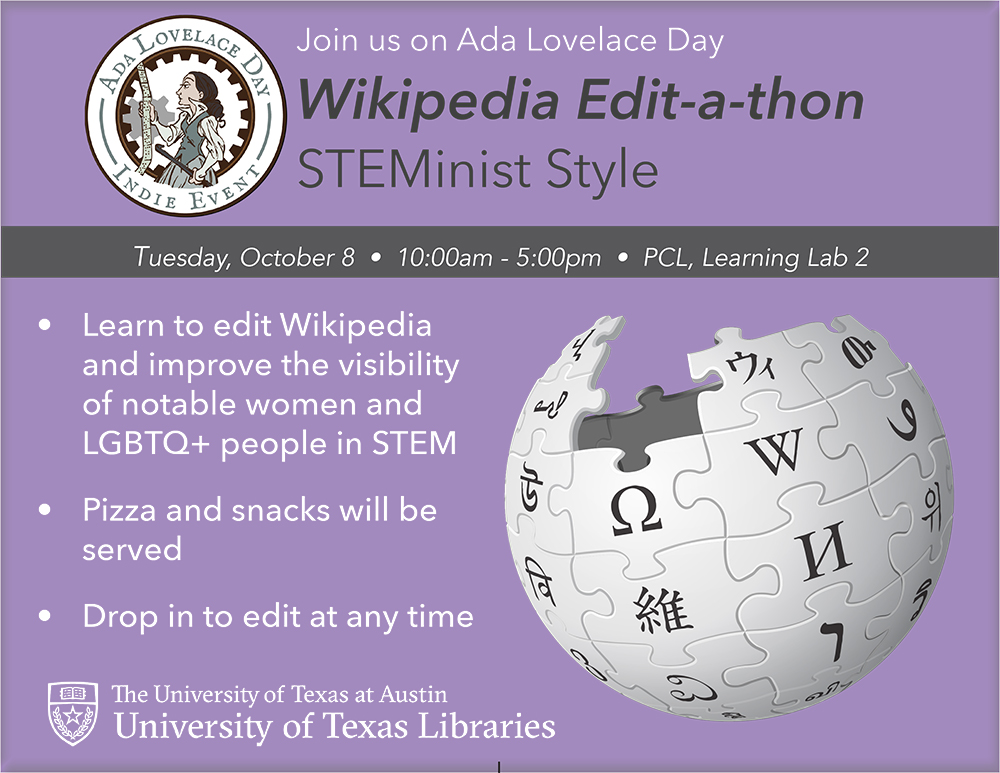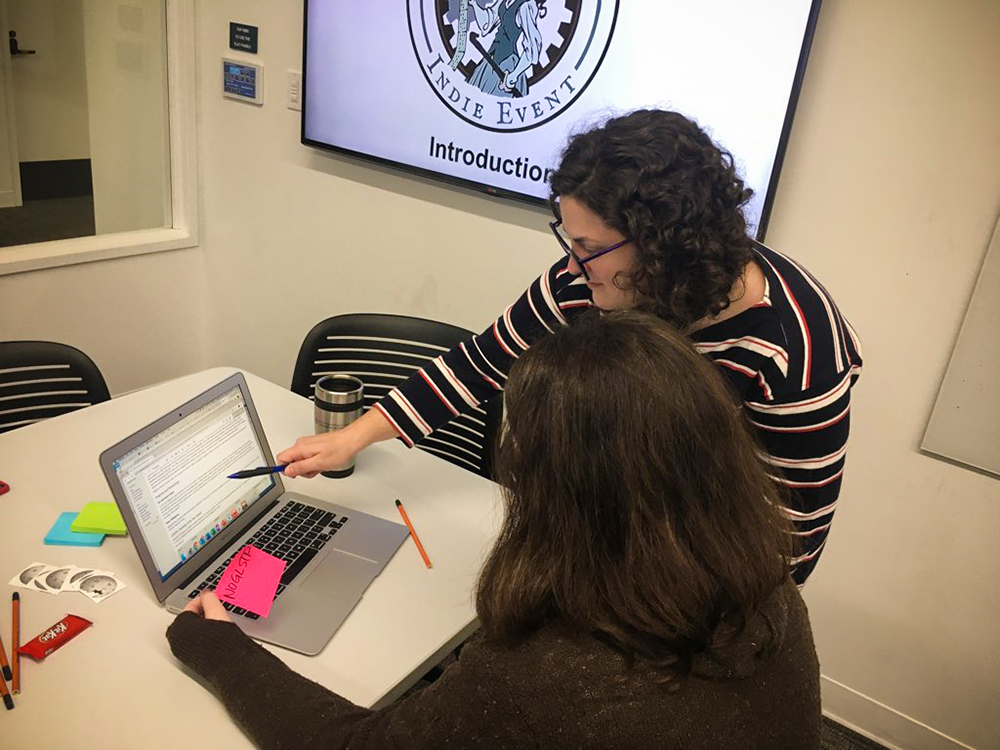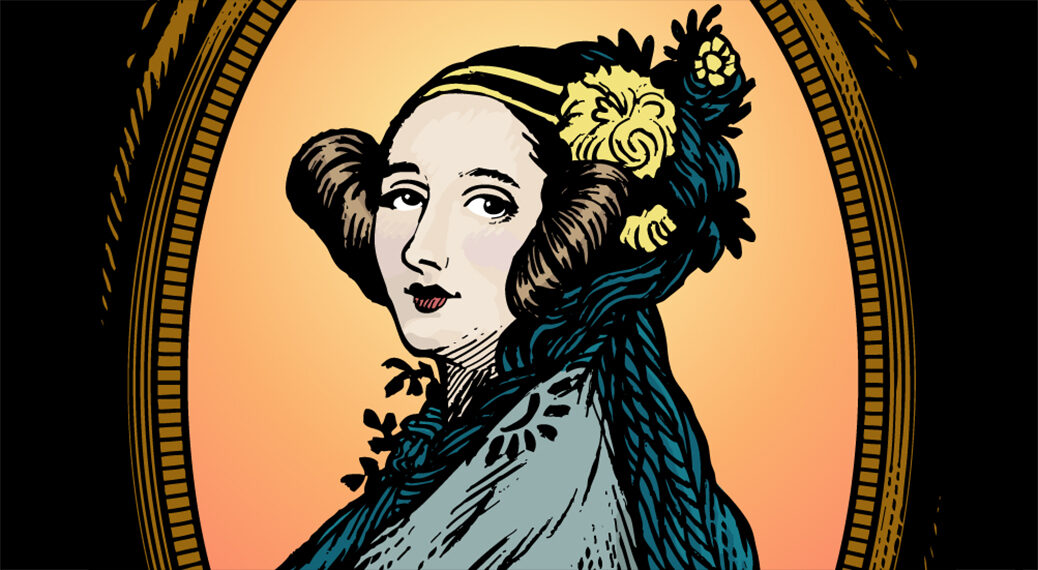
Ada Lovelace was a pioneering computer scientist and mathematician of the 19th century. Since 2009, on the second Tuesday in October individuals around the country and globe gather to celebrate Ada Lovelace Day by commemorating her life and raising the profile of women and LGBTQ+ persons in the STEM fields. To honor her legacy, a group of librarians at UT planned and facilitated a daylong Wikipedia Edit-a-thon scheduled for October 8, 2019.
Beginning in earnest in mid-August, four librarians including Gina Bastone, Roxanne Bogucka, Lydia Fletcher, and myself sat together at a table in the Physics, Math and Astronomy Library to brainstorm ideas and organize what would turn out to be an amazing experience and very meaningful event. The event drew more than 45 participants from across campus to learn about the Wikipedia editing process and get inaugural edits under their belts.
To organize a successful Edit-a-thon event requires considerable planning in addition to forethought and purpose. Some of the initial goals were to improve the visibility of women in STEM fields, to teach first-time editors the quirks of Wikipedia editing, and to democratize the process of editing Wikipedia, which itself is largely contributed to by cis white men. Creating an accessible and drop-in event where folks could learn something, grab some food, and edit in between classes was also a priority. Starting the research process, identifying useful Wikipedia-friendly sources on top of creating content was a high order to meet in addition to orienting participants to the editing process. Reflecting on our cumulative past experience it was agreed that structuring the event to be largely self-guided was the best approach. Recognizing that the average participant may spend about an hour between classes at the Edit-a-thon, librarians identified pages that required editing and organizing sources ahead of time, focusing specifically on local women in STEM. We reached out to campus groups such as Women in Physics, Gender & Sexuality Center, and CNS-Q, who proved helpful by enthusiastically providing support in word of mouth and extra sustenance on the day of the Edit-a-thon.

We organized the day through a system of Google Drive links and physical sticky notes to ensure that only one person would be editing one article at a time, while retaining the ability to have more than one contributor to each article on the day. Using this system of sticky notes to identify topics for editing, each person would grab a note with a unique scientist’s name off the board, hold on to it while editing that topic and then return it to the board if the entry still needed further edits. The Google Drive folder contained supporting material for our selected topics in addition to a wealth of curated training documents. Many of these training documents were reused and can be reused again in the future. These tools allowed us to plan and coordinate an event without having a required time for a formal demonstration.

The Edit-a-thon was wildly successful and drew participation from many first-time editors in the College of Natural Sciences. While the turnout was better than we had expected, the true success was in the feedback. All of the respondents to our survey agreed that they had learned about editing Wikipedia and the construction of articles at the event, and 87% said that they plan to continue editing into the future. The goals of the planning group had been met and exceeded, encouraging us to run further events teaching the ins and outs of contributing to Wikipedia.

